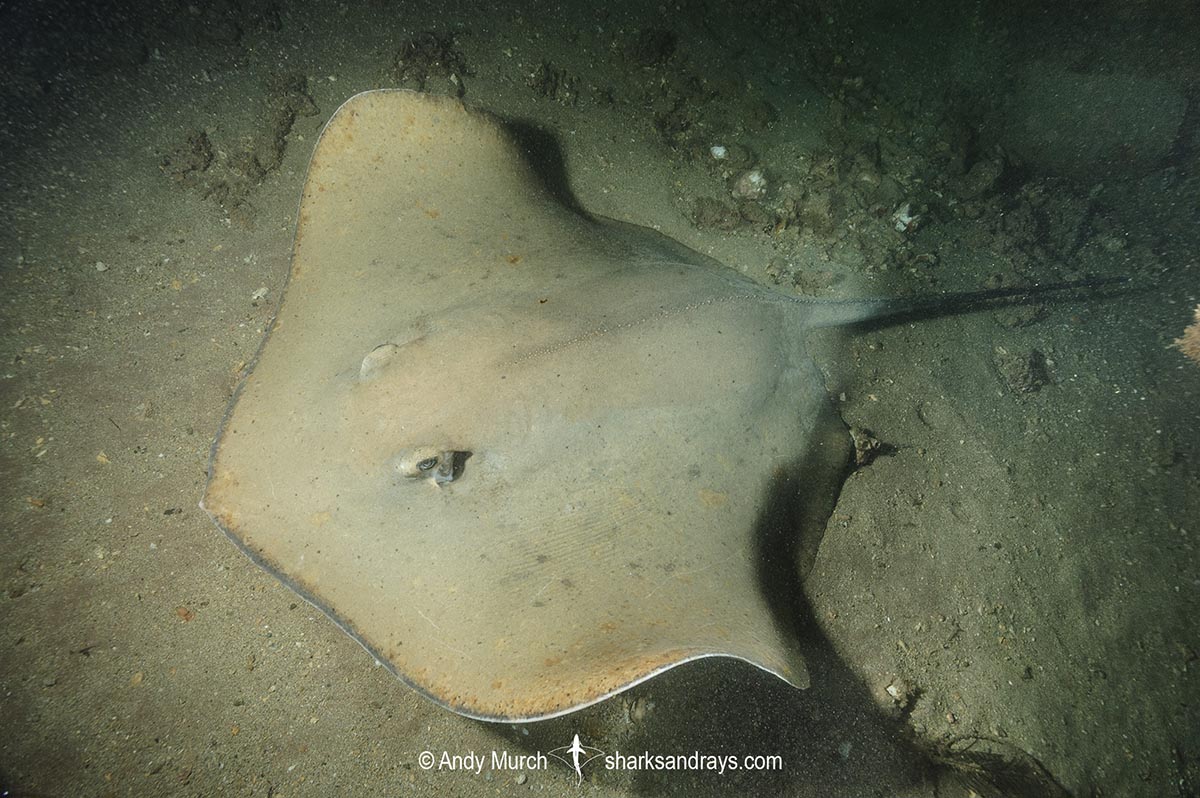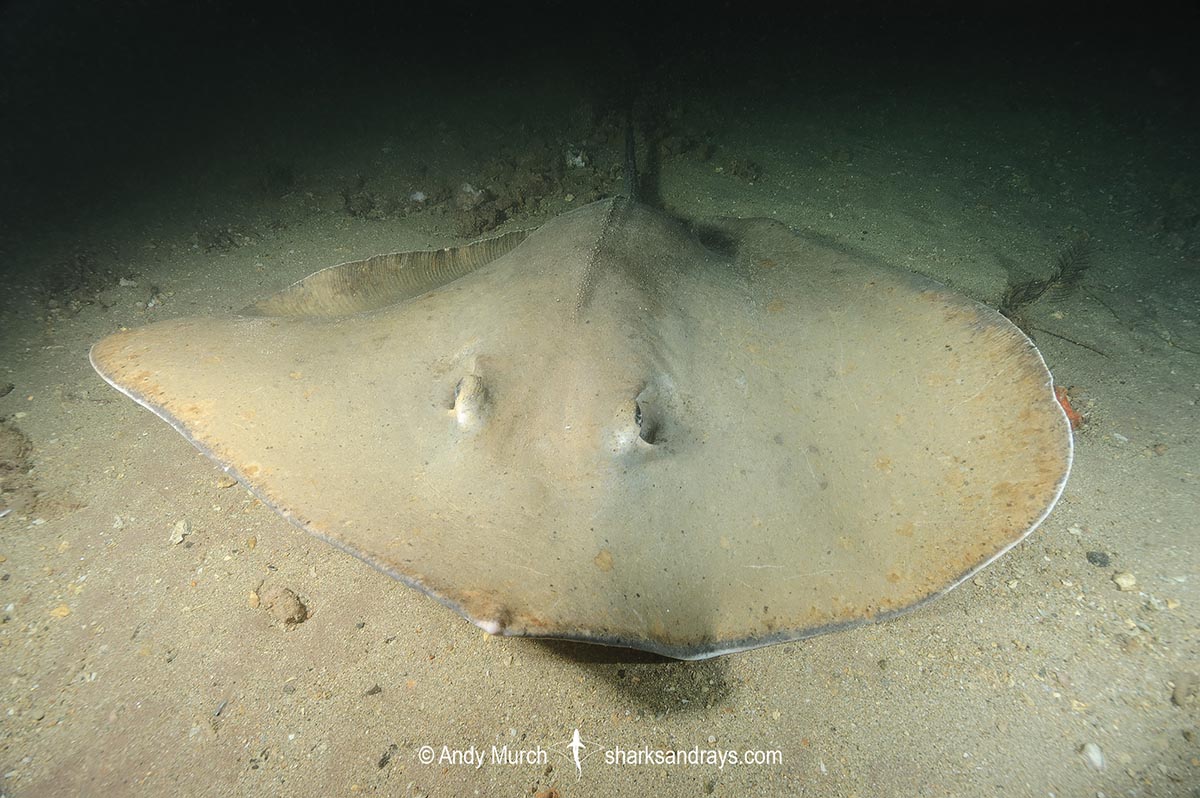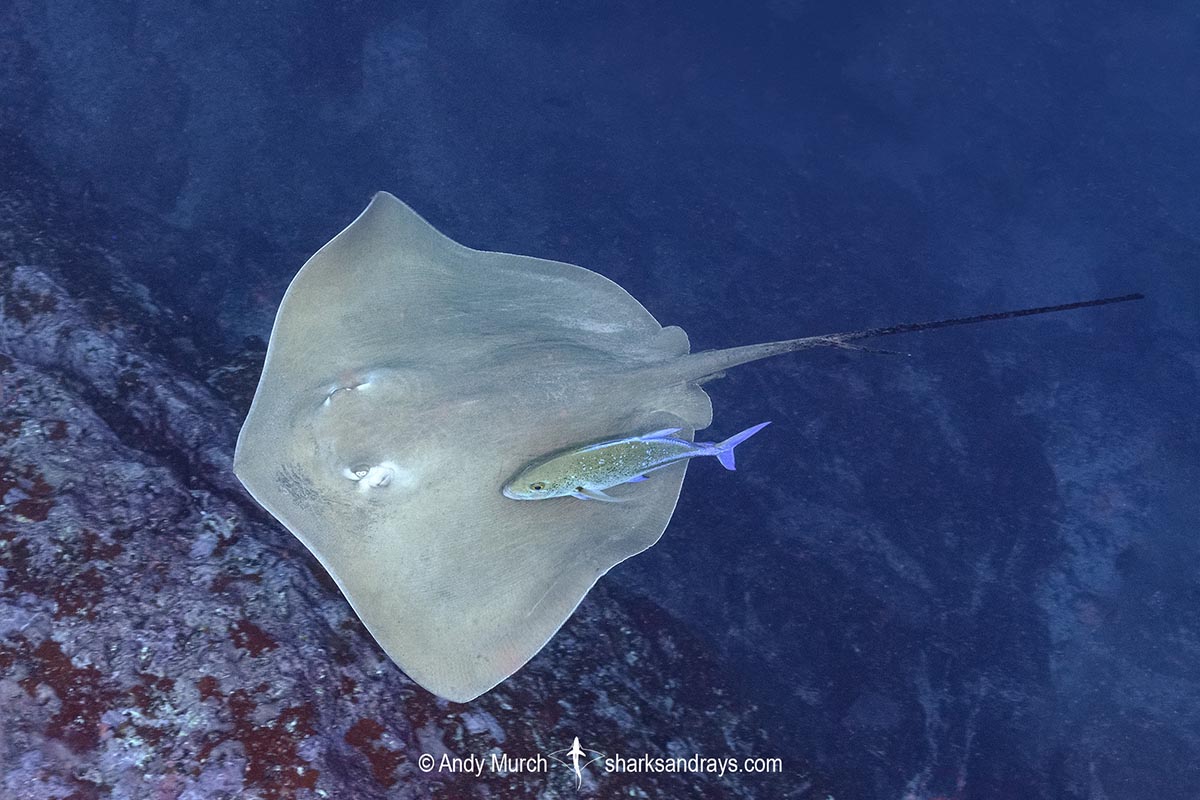Common names
Jenkins’ Whipray.
Binomial
Pateobatis jenkinsii.
Synonyms
Dasyatis jenkinsii, Himantura draco, Himantura jenkinsi, Himantura jenkinsii, Trygon jenkinsii.
Identification
A large stingray with a kite-shaped disc that is wider than long; disc width approximately 1.1 x length. Snout fairly short, and obtusely angular. Apical lobe (snout tip) triangular, slightly extended. Anterior margins of disc straight. Pectoral fin apices narrowly rounded.
Eyes small and slightly protruding. Snout length 2-2.5 x combined eye and spiracle length. Mouth small to medium-sized, containing 2-4 oral papillae; 2 central papillae very large, lateral papillae very small. Prominent labial furrows and folds around mouth. Lower jaw slightly arched. Nasal curtain skirt-shaped; posterior margin finely fringed.
A thin but prominent, dense denticle band on mid-shoulder. Row of pronounced wedge-shaped thorns along midline. Tail short, narrow based, sub-circular in cross-section. Tail tapers gently to caudal sting, then whip-like to tip. Tail length (when intact) 1.1-1.4 x disc width. Caudal finfolds absent. 1-3 caudal stings may be present.
Colour
Dorsum yellow-brown; slightly lighter patches in front of eyes. Ventrum white. Tail beyond caudal sting fades to black.
Size
Maximum disc width 150cm. Disc width at birth approximately 23cm.
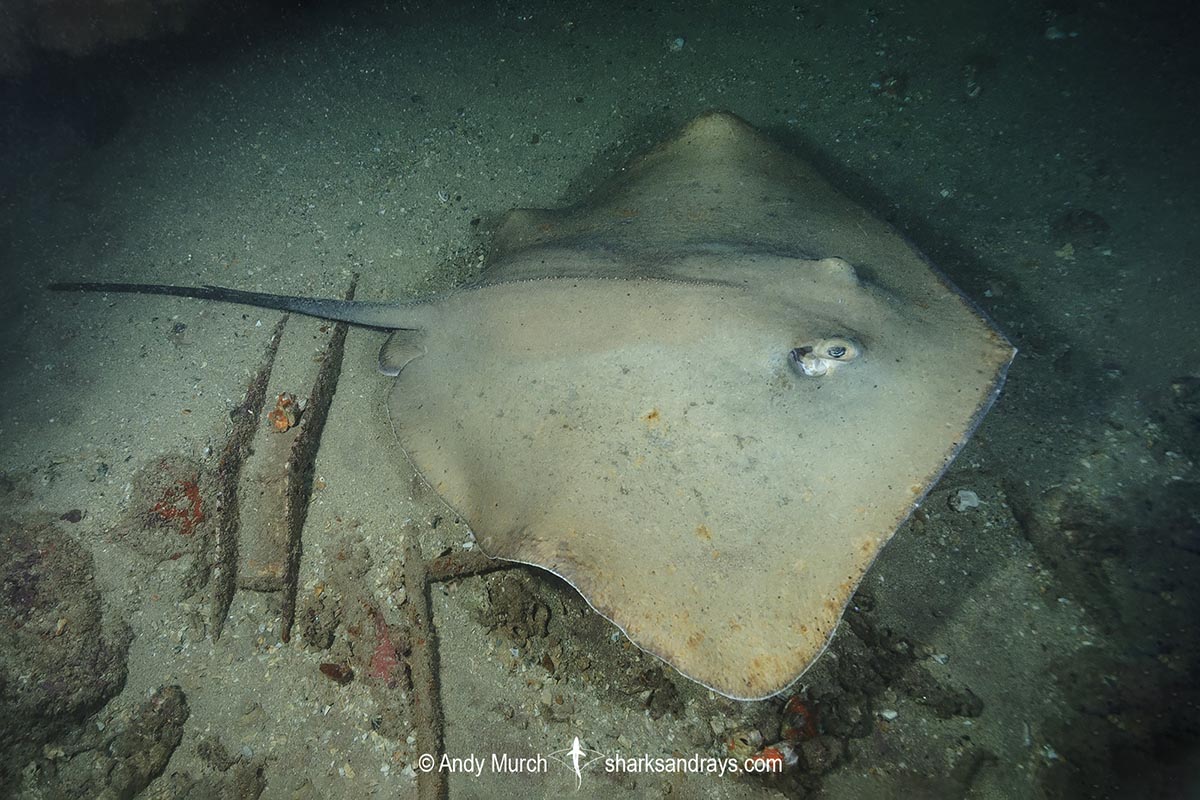
Conservation Status
ENDANGERED
Jenkins’ Whipray (Pateobatis jenkinsii) is a retained bycatch component of tangle net, gillnet, trawl net, and dropline fisheries throughout Southeast Asia and parts of the Indian Ocean where inshore fishing pressure is intense. Although no species-specific data is available, overall catches of stingrays have declined significantly in areas of Southeast Asia and the Indian Ocean. Although the population in Australia is stable, it is suspected that Jenkins’ Whipray has undergone a global population reduction of 50–79% over the past 60 years.
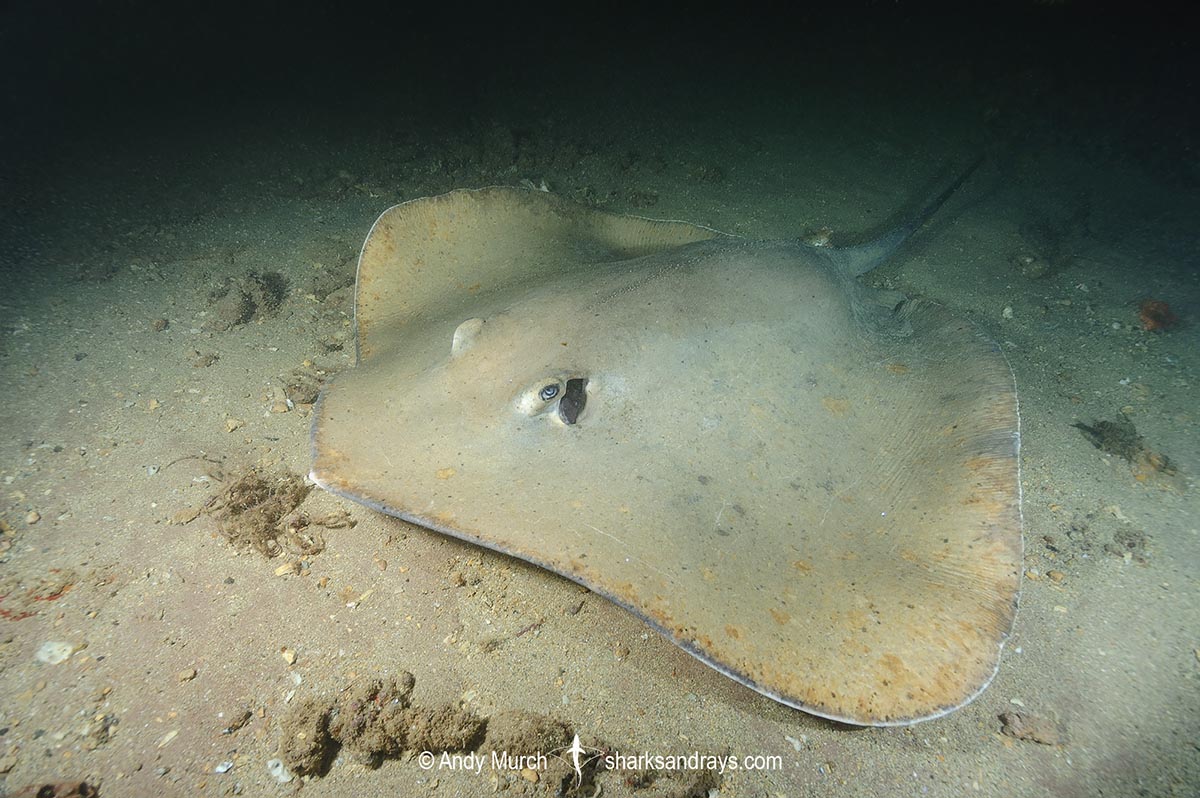
Habitat
Tropical seas. On sandy substrates, often adjacent to reefs. From shallow bays to at least 90m on continental shelf; usually less than 50m.
Distribution
Indian Ocean and western Pacific. Recorded from South Africa and East Africa but unconfirmed around the Horn of Africa or in the Red Sea. Present in the Arabian Gulf to India, throughout Southeast Asia, and in northern Australia.
Reproduction
Histotrophic viviparity. Litter size unknown.
Diet
Diet unknown but presumably feeds on small fishes and prawns like its close cousin the pink whipray.
Behavior
Known to shelter in caves and under reef ledges.
Reaction to divers
Shy unless accustomed to divers. Then, fairly nonchalant unless approached too closely.
Diving logistics
Jenkins’ whiprays are seen quite regularly at Ningaloo Reef and around the Navy Pier in Exmouth, Western Australia.

